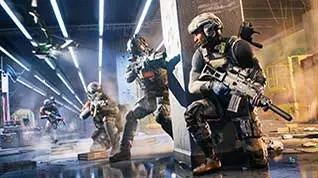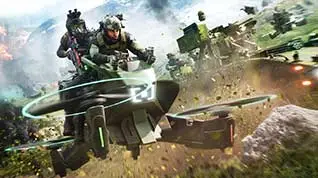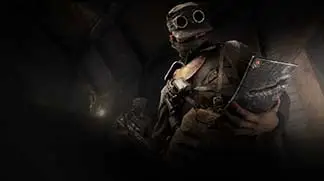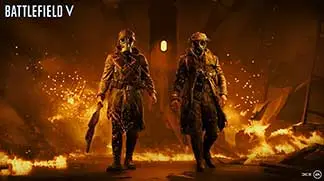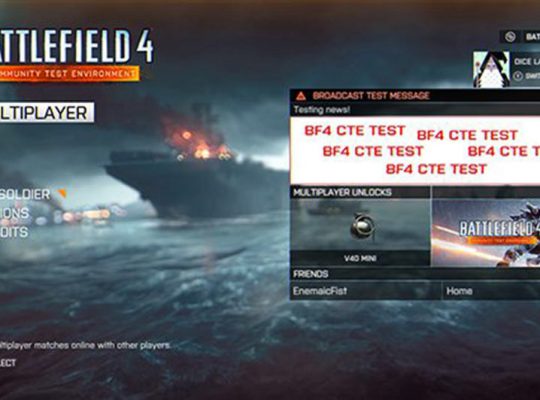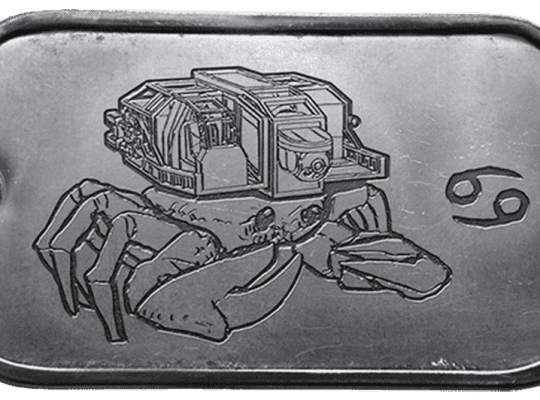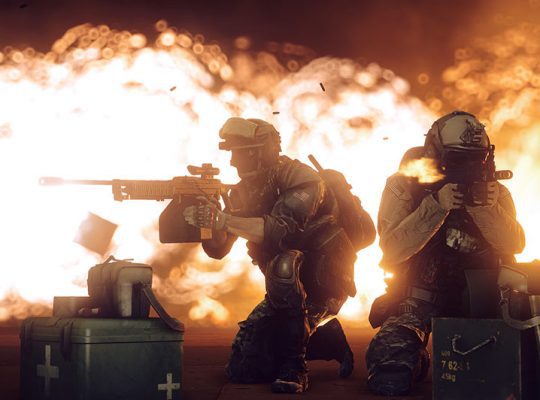Battlefield 4 Dialling Up The Team Play – Welcome to The Road to Battlefield 4, a new blog series where we’ll explore every aspect of Battlefield 4 in great detail together with the developers at DICE.
First out: How the new elements of Battlefield 4 multiplayer will bring out the best team player in you.
Lead Multiplayer Designer Thomas “Tompen” Andersson is one of the true veterans here at DICE. He’s been with the company for two decades now and knows Battlefield inside and out. When he accepted command of the development of Battlefield 4’s multiplayer campaign, he immediately knew what he wanted to achieve:
I think Battlefield 3’s multiplayer is incredible, but I can’t wait to hear what our fans think about Battlefield 4. We’re having a blast playing it at work in its current Alpha stage, and I think we’re onto something big. We want to build upon what makes Battlefield 3 great, and one of the areas where Battlefield shines is team play. The way we’re going about it in Battlefield 4 is to highly encourage team play – but never force it. We want to promote team play by creating great gameplay mechanics such as Field Upgrades, Commander Mode, and a new range of gadgets specifically designed to expand co-operation in the field. We have drastically expanded on the tools and benefits of efficient team play, and as a result we feel Battlefield 4’s multiplayer experience is the deepest, most rewarding, and fun experience in the series.
Class reunion with a twist
The four playable kits from Battlefield 3 will be back in Battlefield 4: Engineer, Recon, Support, and Assault. While keeping these core kits intact, we are increasing the ability for players to more strongly specialize their combat role while also increasing flexibility and catering to different play styles. At the same time, we’re maintaining a distinct flavor in the different kits and building more meaningful interactions between them. We will go more in-depth on the specific classes in the next blog post.
No matter your play style, we have an extremely deep collection of features in Battlefield 4, and we want to make sure that you can experience that wide array of options available to you. Looking at Battlefield 3, I think only a fraction of our players have tried all available gadgets or vehicles in multiplayer. Of course you don’t have to use everything in the game, but I think we can do a better job in BF4 of letting players make more educated choices in their kit load-outs and combat roles.
I think some players in Battlefield 3 stuck with the default Assault loadout. That’s fine – there’s a reason why it’s the default – but I think they’re missing out on so much amazing variety. In Battlefield 4, we’re clearly displaying what gadgets can do for you, how different weapons compare, and how they affect your options on the Battlefield.
Great team play = great perks
We have this new concept called Field Upgrades. If you’re a long term fan that played Battlefield 2142, you will already have an idea what these are, but we have tweaked them for Battlefield 4. In short, Field Upgrades are chained boosts that can affect a number of gameplay mechanics for your player. Similar to the specializations in Battlefield 3, these can for example provide you with faster sprint speed, stronger personal armor, or expanded ammo capacity.
The idea behind Field Upgrades is to give individual rewards for squad based team play performance. You earn them through squad scoring such as squad healing, completing objectives with your squad members, squad resupplies, squad repairs, and other squad actions. Instead of one single specialization like in Battlefield 3, you can now pick from different upgrades paths, each containing four specializations. Keep the squad alive, and you will move through the accumulative upgrade path. But watch out! If your entire squad is eliminated, you will lose some of your progress.
Showing you how team play gives you the edge in the bigger battle is paramount for us, and it involves all elements of the game: audiovisual feedback, user interface, gameplay mechanics, and the way the entire persistence system is designed. When we tie all of these elements together with the tweaked team-based scoring, we have a game where I think everyone will find it satisfying and deeply engrossing to truly be part of a team.
Creating a positive feedback loop
I’ve always been fascinated by creating interconnected systems and seeing how players use them. A great example in Battlefield 4 is the reward cycle incorporating every link in the chain of command. For example: The Commander issues an order (example: “Capture Base A!”), the Squad Leader passes it on to his squad mates, and the squad gets the work done. This executed order will reward everyone in the command chain and also open up ways for the Commander to further reward his team. This creates an Eco-system that I believe will take team play in Battlefield 4 to new heights.
In the next episode of “The Road to BF4”, we’ll be taking a much closer look at exactly how Field Upgrades and the upgrade paths work, as well as revealing some of the all-new specializations we’re introducing in Battlefield 4.
Levolution – The perfect storm
Watching our fans play Battlefield 3 has taught us a lot about player behavior. As developers, we tend to play our games one way, while fans try a lot of interesting things that we never thought of. Take the antenna on Caspian Border, for example. After players had seen it fall once, we could see them using everything in their arsenal to try and bring it down themselves. It might sound like a simple example, but it was one of the factors that initially made us think about incorporating bigger player-triggered destruction in Battlefield 4 – and that in turn led us to the game-changing concept that is Levolution.
Levolution is an overarching design concept incorporating a lot of features both big and small, that all affect gameplay in some way. You’ve probably already seen what it can do to skyscrapers but it also includes features like changing weather conditions that affects visibility, car alarms and metal detectors alerting players of enemy presence, or the ability to completely shroud a building in darkness and take out the enemies within using your IRNV scopes. Much more than just massive feats of destruction or pretty graphics, the exciting thing about Levolution is how it affects gameplay. From bringing down a skyscraper to securing a zone from enemy vehicles by raising bollards to block entry, Levolution will let you dynamically shape every game. And like so many other elements in Battlefield 4, Levolution also ties into the team play aspect of the game.
“Levolution will let you dynamically shape every game”
For example, depending on your team strengths, collapsing the skyscraper on our E3 map “Siege of Shanghai” can be either a positive or a negative. When you’ve knocked out its four main pillars, the skyscraper will fall in a massive cloud of dust and debris, killing all players unfortunate to be trapped inside. The base that used to be capture point C at the very top of the skyscraper will now be found at ground level, amidst the jarring blocks of concrete and rubble. This new infantry battleground will be clouded by dust, making navigation hard and often seeing players switch to infrared night vision scopes or FLIR. What used to be sniper heaven and the ideal para-drop base has suddenly turned into a low-visibility close quarters combat arena. This is great if you’re all about infantry combat, but if you have a team of great pilots, you will probably want the skyscraper to stay intact.
We’ll go more in-depth on the design process that led up to Levolution, as well as showcasing more examples of what this powerful concept can do in a future post. If there is one thing I wanted to focus on for multiplayer in Battlefield 4, it’s the idea of an open-ended design — We are creating a dynamic and complex “sandbox” where YOU decide what you want to do with it. That’s an emergent type of gameplay that we pride ourselves upon here at DICE.



